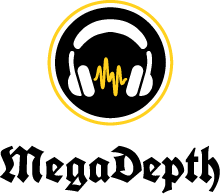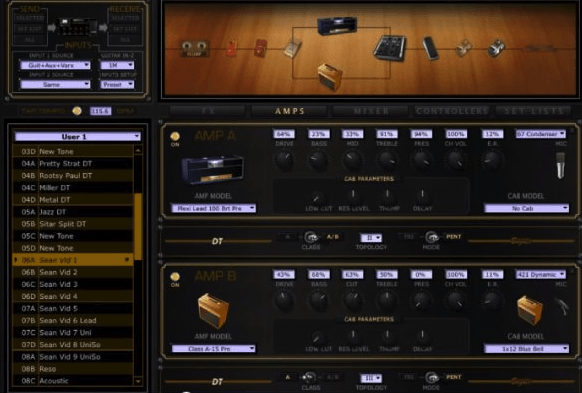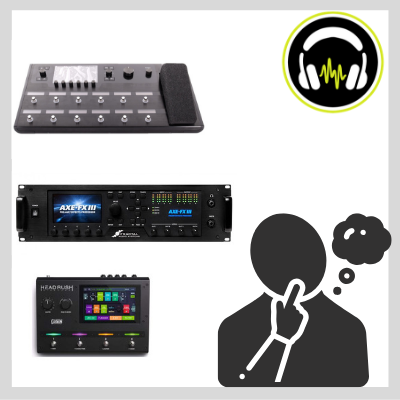
Today’s amp modeling technology, in my view, is absolutely amazing. Judging by the updates we get frequently from various companies it seems to get better and better. I’ve changed my set up a few years ago, had a chance to try a few different products, and I wanted to share my thoughts with you.
This article is not meant as a review or a demo. I’m not affiliated with any company mentioned here. It’s just my thoughts on amp modeling in general, as well as certain products I like to use.
To be honest with you, despite the fact that I’ve been into the digital way of things for a while now, I’m still learning. I could never claim that I know everything about every product I own. Not only is today’s technology capable of handling many different variables, it’s also becoming harder to be aware of updates when they come frequently. But I’m already at a level where I know enough to get a tone I like and keep a set up that is flexible, easy to use, and that offers a big variety of tones. I’ve also been lucky enough to get my hands on a few different modelers. This is why I thought this was a good moment to reflect on this topic.
We’ve got to address one issue before we can get into anything else. Should you stick with tube amps or go digital? You can ask this question a million different ways (analog vs. digital, pedalboard vs. all-in-one solution, etc.) but they all come to the same point. The answer is obvious to me. It’s not obvious to some which is why this is still a heated debate… To me, this whole debate is an absolute waste of time. What is better will depend on your preferences. No one can answer that for you. There’s pros and cons to any set up and you’ll just have to figure out what it is that you need. I prefer a digital set up; I’m absolutely thrilled with the possibilities and tones. I also find it easier to maintain. But if you want to stick with an analog set up and you love your tube amps, more power to you! Or, perhaps you want to combine the two worlds and use both. But, at the end of the day, there’s nothing wrong with going digital either. No need to be a tone snob, you go with what works “better” for you.
Okay, now that that’s out of the way, I’ll tell you why I went digital.
Back in 2012, I bought a Marshall JVM 205C combo amp. I couldn’t tell you why I picked this particular brand and amp. There was a time when I made purchasing decisions not based on what I needed but based on what other people were using… Still, this amp sounded good! It’s not like it had a crap tone or anything like that. But I started getting frustrated with having to change the tubes so much. I followed every rule in the book to take great care of my amp. I never gigged with it either – it always remained at home. But I still had to change the power tubes twice a year because the volume would be so inconsistent as I played. Some high-end amp modelers cost a lot of money, but when you add the cost of a good tube amp, as well as having to change the tubes every now and again, that can actually become far more than what you’d pay for a modeler. Add to this the fact that with this amp, I was only getting a few different options for tone, unless I was willing to play around with several pedals. I didn’t know it back then, but I was a prime candidate to try amp modeling. I sold this amp in 2016. I use a couple of FRFR speakers or my Yamaha monitors with my modelers. I haven’t bought another tube amp since.
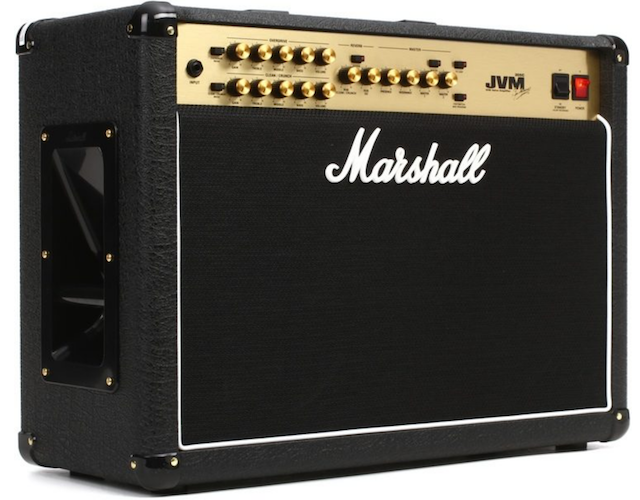
My first experience with a digital setup was a Boss GT-10. To be honest with you, I didn’t really know what I was doing at the time. I bought it because I knew of the Boss brand and I wanted to try a guitar effects processor. I fully admit that I didn’t do this product justice. I barely scratched the surface with it and ended up not using it too much. You didn’t get the best results unless you bypassed your preamp, but if I had that Marshall, it didn’t make sense to bypass it all the time. In any case, I sold it after a while. It was a good introduction to what a multi-purpose digital processor could do. In that sense, I’m glad I used it for a short while.
My first real introduction to amp modeling was with a Line 6 POD HD Pro. This was before the Helix was out. I wanted to get into home recording and I noticed POD HD Pro was quite popular on online forums. Some didn’t like it, but hey, you never please everybody anyway! Sounded good enough for me so I got it. A little later I bought Yamaha HS8 monitors to go with my new set up. The funny thing is, at first, I hated the POD. I found it too complicated to generate new tones. Imagine my surprise when I found out it actually came with a software to make it easier! I told you I was new to this at the time! Once I figured out an easy way to play around with different tones, I realized the POD HD Pro was a fantastic introduction to amp modeling. Yes, the technology of the Helix, as well as some others, is far beyond that of the older products. But make no mistake, the POD HD Pro is a perfectly fine product to get you started and create some cool tones. I recorded a couple of songs with it. But the biggest benefit of this set up was it made me realize that the digital set up was the way to go for me. I sold my Marshall amp after getting acquainted with this. It was an eye opener. I’ve sold it since, but only because I’d gotten the Helix and it didn’t make sense to keep both.
Speaking of the Helix… That was what was next in line for me. Can’t recall when exactly I bought it but it was sometime in 2017, I think. Before I bought the Helix, I went through my research phase and asked myself a question that almost everyone asks: Do I get an Axe-Fx II (III wasn’t out yet), a Kemper, or a Helix?
Let’s address another common debate. Which of these products is better? The answer is none of them is better than the other overall. They sometimes do different things, and even when they have similarities, their layouts are different, their workflow requires different levels of tweaking, and they come in different sizes and shapes. But they’re all great quality products. If you can’t get a good tone out of these 3, you should spend more time with your product and get to know how you can tweak certain things.
I chose the Helix because Kemper was a profiler, and I didn’t want that. I wanted an amp modeler first and foremost. And because I have limited time for guitar playing, I wanted a product that was relatively easier to follow. I didn’t want to spend eternity tweaking things to get somewhere. After checking out demos and talking to some musicians, I realized Helix offered a lot of great tones but it was also a little easier to get the hang of compared to the Axe-Fx. The Floor version also has the scribble strips which is such a fantastic idea to add to a floor unit! I made my decision based on my criteria and it worked. I still have my Helix and since then bought Helix Native and HX Stomp too. But the point is, all these premium products are great. Again, stop wasting time with the “better or worse” debates. They’re all good. Figure out what will work for you and be patient with your product. YouTube reviews offer some great insights on all of these. For the Helix, I’d highly recommend Pete Thorn’s demo from a while back.
Also, if certain presets don’t sound good to you with any of these modelers, remember that the creators of the presets cannot know everybody’s speakers. They do their best – but you hear it through your speakers. Create your own tone and go from there…
One other thing that is common when you watch YouTube reviews of amp modelers is people trying to figure out how close an amp’s model is to the real thing. This is an important criterion for sure. I don’t blame people for trying to find out which product will get them closer to a certain real amp; especially when a lot of brands advertise their products based on the modeling they do. If this is important to you, by all means check out as many reviews as you can. You can also try out some preset packs of certain amps and see how other people are getting close to certain real amp sounds. As for me, this isn’t the most critical thing about a modeler. I wanted a modeler to get tonal variety. I don’t really care how “close” they get to the real thing. Obviously, I don’t want them to be far off. I want to have an understanding of how I can build my tone based on the amp block I’m using; I just don’t care if it’s 100% identical. If a tone works for me, it works for me. Not everybody feels that way and I get that.
Over the last 2 years, I’ve also played around with a HeadRush Gigboard and an Atomic Amplifire 6. The Gigboard is so easy to use that you can’t make tweaking easier than that. The touch screen is a life saver. The tones are good too once you adjust things a bit. By the time I figured out the IRs I liked on other platforms, I could just upload them on the Gigboard too. I don’t know if I’ll keep it or not; not because I don’t like it, but because I already have the HX Stomp. But if anyone is looking for a more portable amp modeling option that’s easy to use, the Gigboard can be a great unit. I prefer the tones from the Helix, but the HeadRush can get the job done on many occasions. The Atomic Amplifire 6 is a fantastic unit in terms of tone and it is much cheaper than the Helix Floor or the Axe-Fx. But I didn’t keep it for long because I didn’t gel with the user interface. Even the software wasn’t super user friendly. I sold it a while back so I don’t know if they’ve made any updates since. If you don’t mind getting acquainted with their flow though, the tones are stellar.
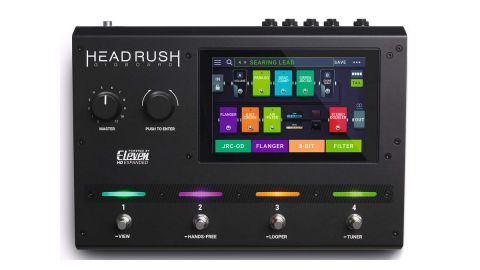
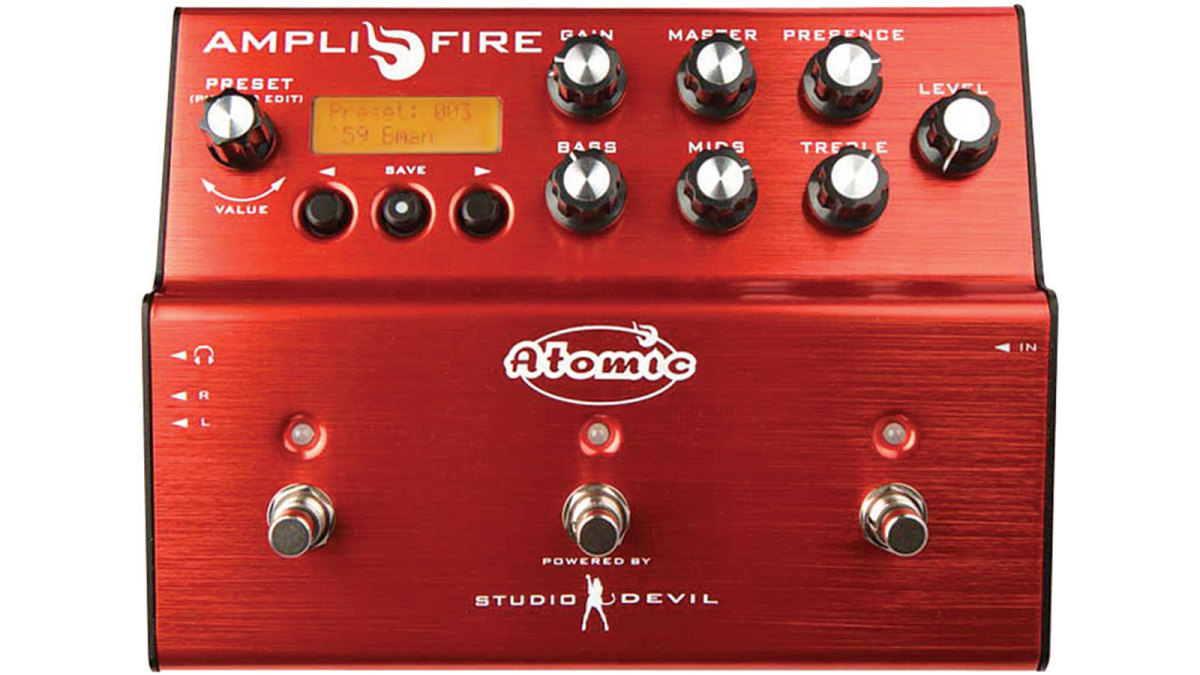
Most recently, I have acquired an Axe-Fx III. I had to save up for a while, but I’ve wanted one since the company announced it. At the time of writing, it’s still a new purchase so I haven’t really played around with it. I didn’t buy it to replace my Helix. The Helix is a fantastic product and I still love it. I bought the Axe-Fx because I wanted to explore something new and see what tones I could get. New tones always inspire new songs, and I welcome that influence. Also, I tend to play metal more than anything else and the reviews of high gain tones from Fractal units are almost always strongly positive. But because I like to try new products, I always go through my inventory and try to sell units that will no longer get too much attention. I’ve sold quite a lot in the last 2 years and I will likely sell more throughout the rest of this year. But I am super excited about my new Fractal unit. I’ll share my thoughts in detail when I’ve had some time with it.
So, there you have it. I think amp modeling is a fantastic piece of technology and I am so glad that all these companies are working very hard to come up with the best possible products or software updates. I’ve had access to a wide variety of great tones, I learned so much about the variables that affect guitar tones, I’ve been influenced by the tones I get, and wrote a lot of new material. I made the switch to a more digital set up a few years ago and I haven’t looked back since.
